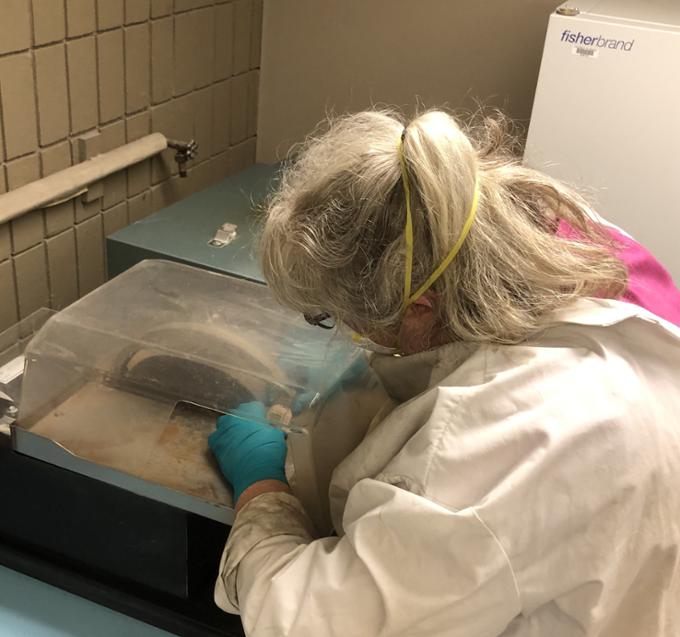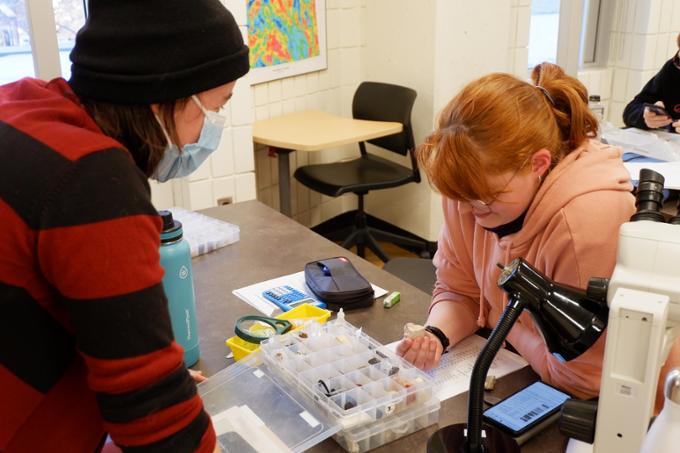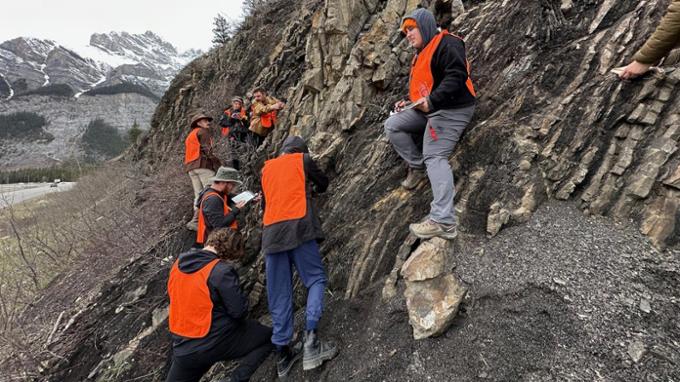Teaching Facilities and Resources
Our department prides itself on teaching “hands-on”, face-to-face, experiential courses. The “hands-on” and experiential aspects of the courses are an important aspect of both the lecture and the laboratory component of the courses. They are also found in various exercises including those from field courses and field trips. These courses help to prepare students for their future work as Environmental Geoscientists or Geologists. As such, completion of the courses and the degree are the first steps toward APEGS certification as a professional geoscientist.
While our lecture locations vary across campus, this is not the case for the laboratories as they involve the use of specific materials and equipment designed for better understanding of the material introduced in the lectures.
We have three rooms devoted to laboratories and a fourth that is used for both lectures and laboratories. They vary in size, holding 15 to 36 learners. Each of these rooms is equipped with a projection system, speakers, and a whiteboard along with materials necessary for the specific laboratories.
Teaching Facilities
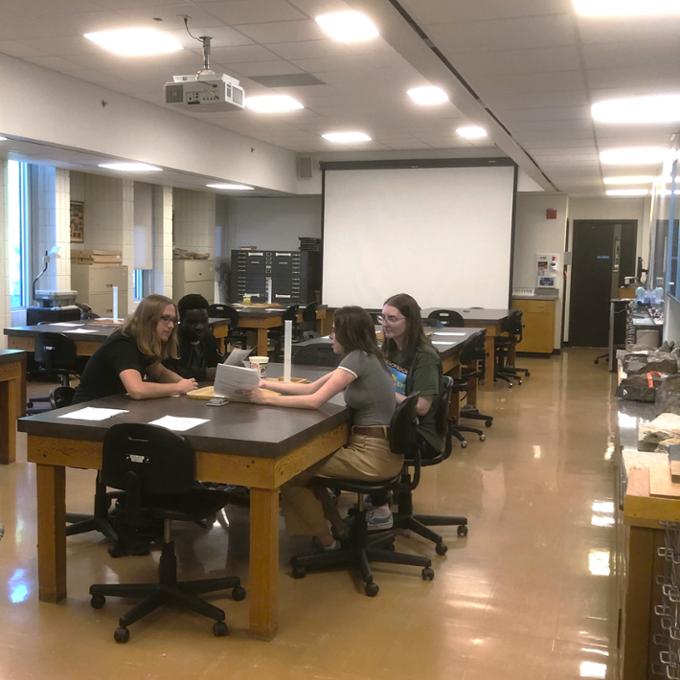
CW 237.1
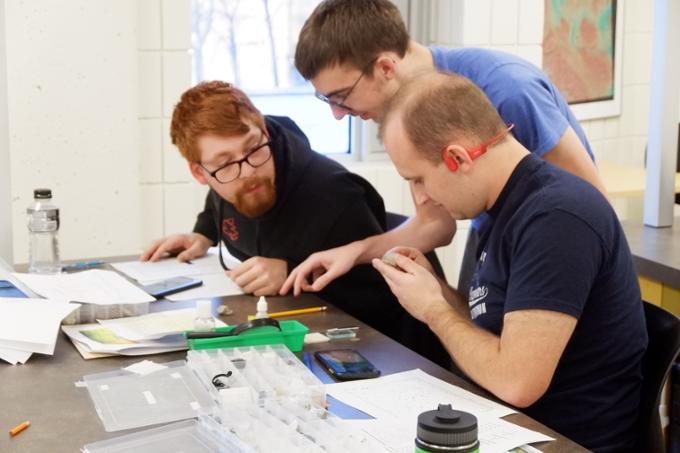
CW 237.3
Used for 1st to 4th year classes such as GEOL 201, 241, and 307. It is also used for classes that require the use of computers with geological programs (i.e., ArcGIS, Geoscout). We also often use this space for departmental seminars.
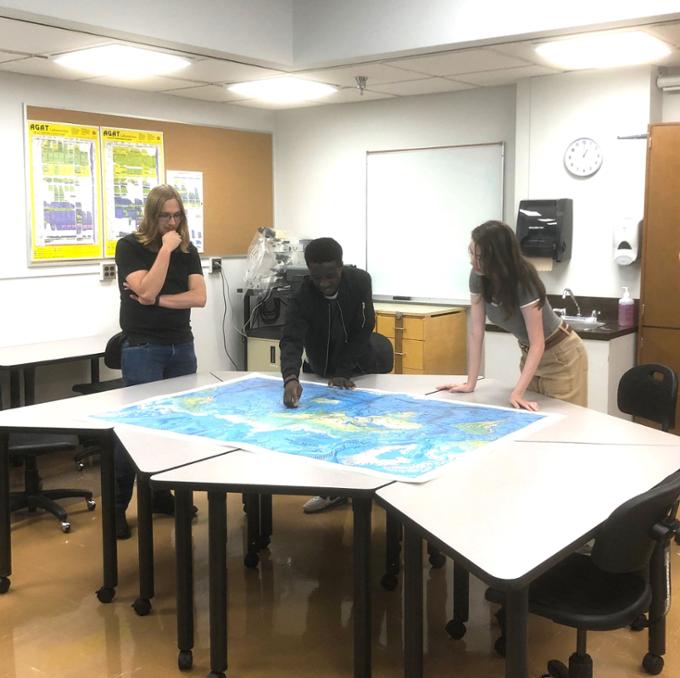
CW 209
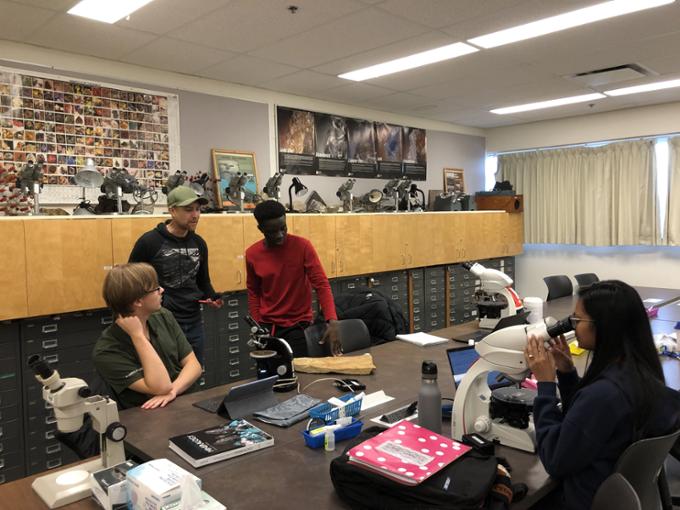
CL 407
Teaching Staff
In addition to our faculty who teach the lecture components of the courses, we have two dedicated lab instructors and a technician to support our teaching activities. Student teaching assistants (TAs) also support lab activities (these are generally graduate students in our department, and occasionally 4th year undergraduate students).
Experiential Learning
Our students learn how to examine geological materials outdoors in the locations where they occur. The previously mentioned trips and the field courses (GEOL 396, 496, and 497) offered by the department are essential to the development of our learners. They get to apply the knowledge they have gained in their classwork to achieve a better understanding of the key concepts, themselves, and group work which are essential to them as future practicing geoscientists.
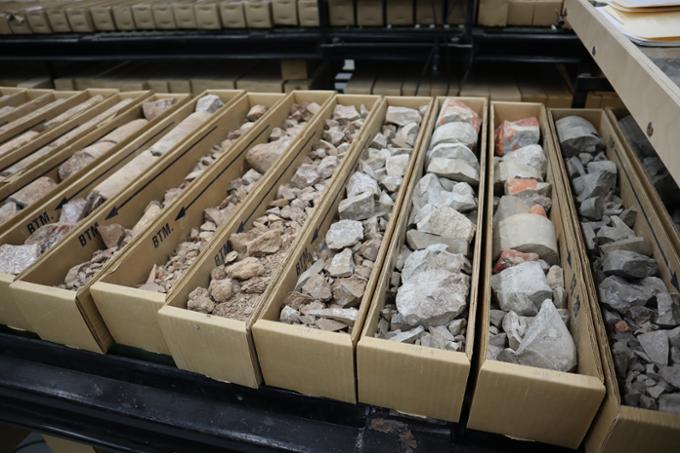
The Subsurface Lab
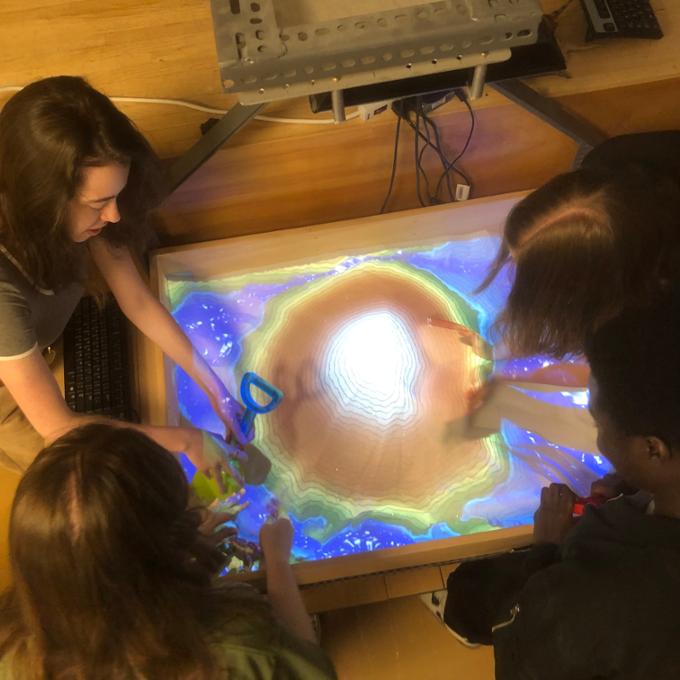
On-campus Trips
On-campus trips include those to investigate rocks on campus and the use of the scanning electron microscope and other research facilities in the department.
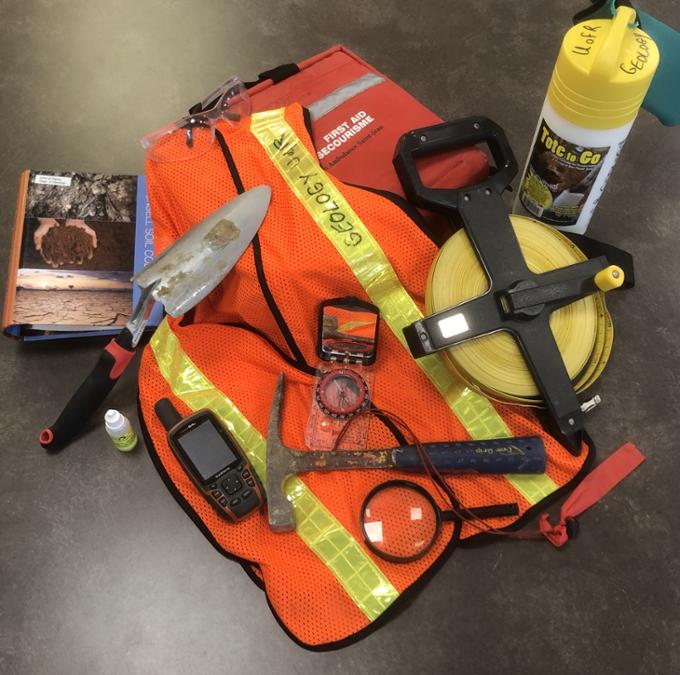
Teaching Equipment
Other Teaching Materials
- Our departmental library and the Archer Library
- Our museum and UofRocks tour guide
- Thousands of rock and mineral specimens, fossils, core, and rock slabs
- Hundreds of thin and thick sections of these materials
- Microscopes include: Leitz Wetzlar monocular -black scopes, Leica DM 750P, Nikon LABPHOT-POL - ore scopes, Nikon SMZ745 stereoscopes, various other stereoscopes
- Faculty of Science drone
- Numerous maps – both geological and topographical
- 3D TV screen and microphone(s)
- Ultraviolet lamps (and containers) and Geiger counters
- Stereoscopes and air photographs
- Models: structures, crystals, and minerals
- Computer programs: MSOffice/365 and SolidEdge
- Upcoming computer programs: Global mapper and IgPet (coming in 2024/2025)
- New Geophysics Equipment (2023)! A hand-held KT-10 S/C meter for measuring magnetic susceptibility and conductivity.
- Kits for remote learning (if needed for situations where required, e.g., pandemic learning): GEOL 102 – rock and mineral specimen kits, GEOL 201 - rock and mineral specimen kits, GEOL 210 – mineralogy I minerals and 3-D printed crystal form kits, GEOL 211 – mineralogy II minerals and rocks kits, GEOL 240 – historical geology rocks and fossil kits, GEOL 241 – palaeontology fossils kits, GEOL 313 – igneous rock kits, GEOL 314 – sedimentology rock kits, GEOL 429 – Glacial geology kits
OER Resources
Four of our courses now use free Open Education Resources (OER) textbooks and other resources developed, in some cases, primarily for the course. These courses are:
- GEOL 102 (textbook, workbook)
- GEOL 201 (textbook and lab book – new lab book!)
- GEOL 240 (virtual field trip)
- GEOL/GES 329 (new virtual tour and tutorials!)
